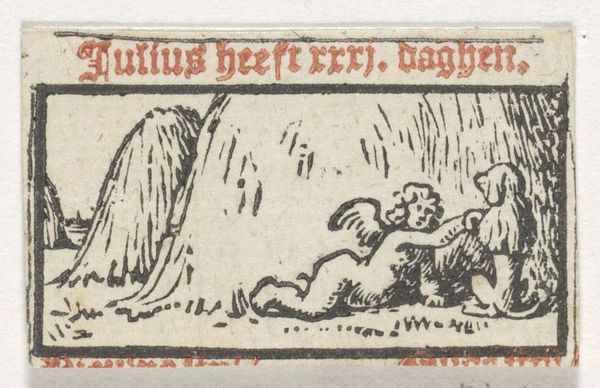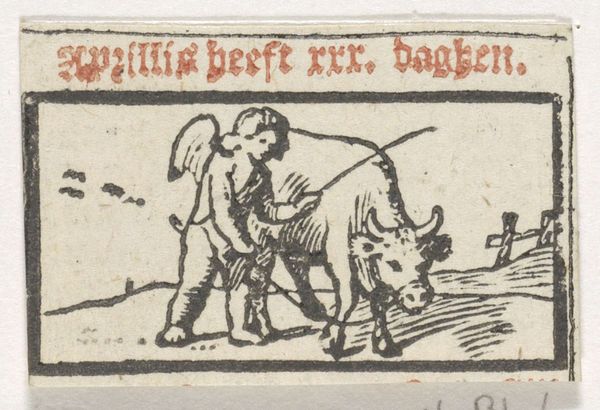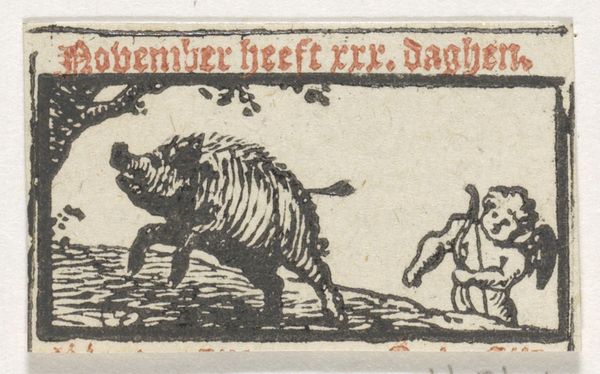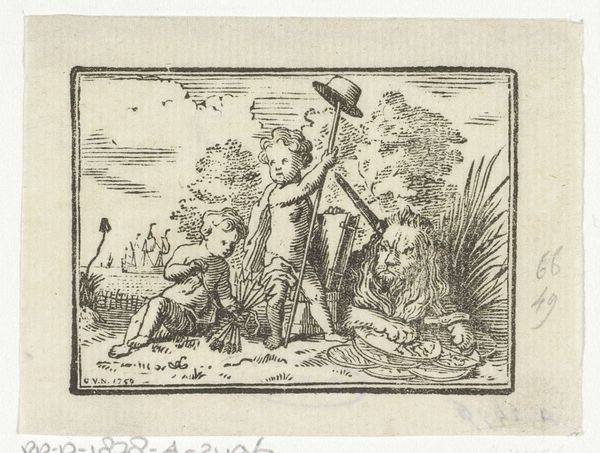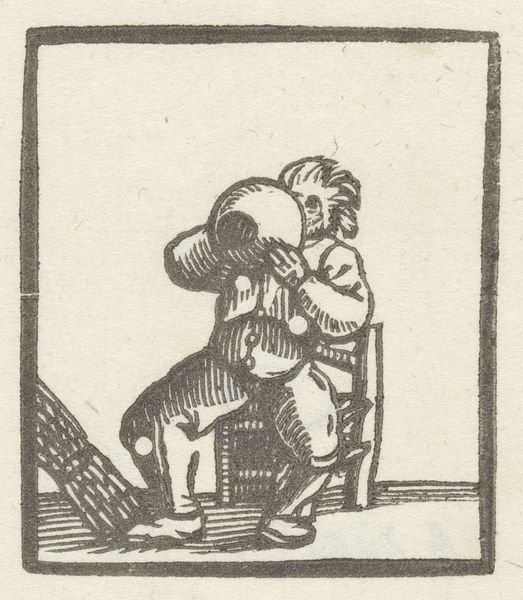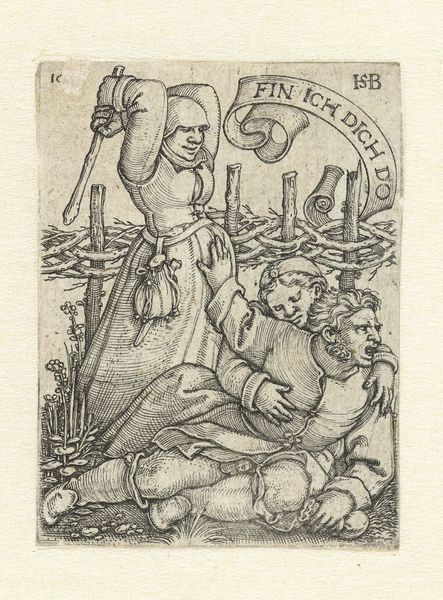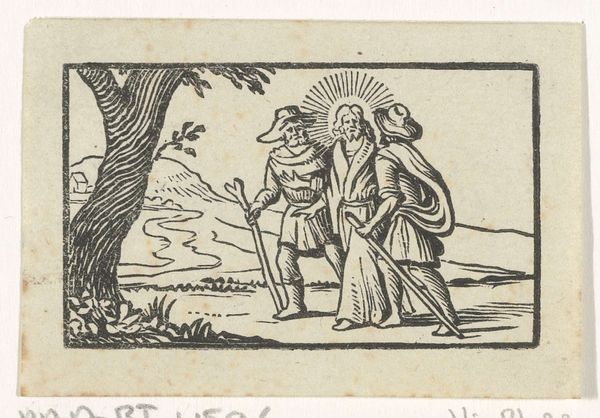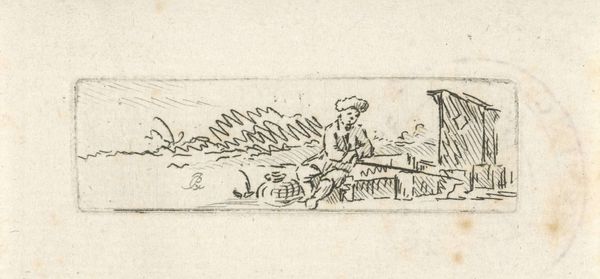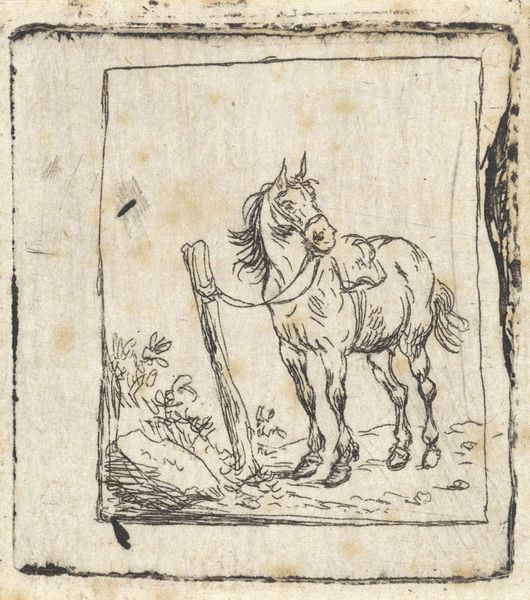
drawing, print, woodcut
#
drawing
# print
#
landscape
#
figuration
#
woodcut
Dimensions: height 23 mm, width 37 mm
Copyright: Rijks Museum: Open Domain
Curator: What a charming little scene! This is a woodcut print entitled "Maart", or March, by Dirck de Bray, created sometime between 1635 and 1694. Editor: It’s simple but evocative. There's a strange stillness to the image that gives it a somewhat melancholy tone, like the end of something rather than a vibrant beginning associated with Spring. Curator: The rough hewn quality certainly lends itself to a rustic interpretation. The medium is important to consider, because it reveals that such prints were a fundamental tool for distributing information. Editor: Information such as? Curator: Well, given the title "Maart", and its depiction of rural life, I'd wager it relates to the agricultural calendar or perhaps local weather patterns—important information to be available in every household, in the 17th Century Netherlands. This artwork shows the function that museums played in circulating imagery and standardizing local culture. Editor: Yes, but note the prominent sheep in the print, seemingly untroubled. It raises questions about access to resources, and the availability of materials in that historical setting. And what are we to make of that boy? Does he belong to the sheep? Does he own it? Was he enslaved in the 17th Century Netherlands? There is a world of socio-political interpretation at play in this piece of work. Curator: It’s definitely ripe for interpretation. Looking again at the landscape elements: the roughly sketched farmhouse, the horizon line… these create a certain vision of Dutch national identity tied to the land, circulating among households in printed form. Editor: I see your point. Even a seemingly simple print like this becomes a vessel for cultural values, expressed through the wood and ink from which it's made, and then shaped and re-shaped as those who used and continue to use these very materials that form culture as we know it! Curator: Exactly! I think looking at it today we can understand a bit better how art helps us find out what history is really made of. Editor: Agreed. Art pieces are just one way of piecing the complex and compelling nature of Dutch art history.
Comments
No comments
Be the first to comment and join the conversation on the ultimate creative platform.
